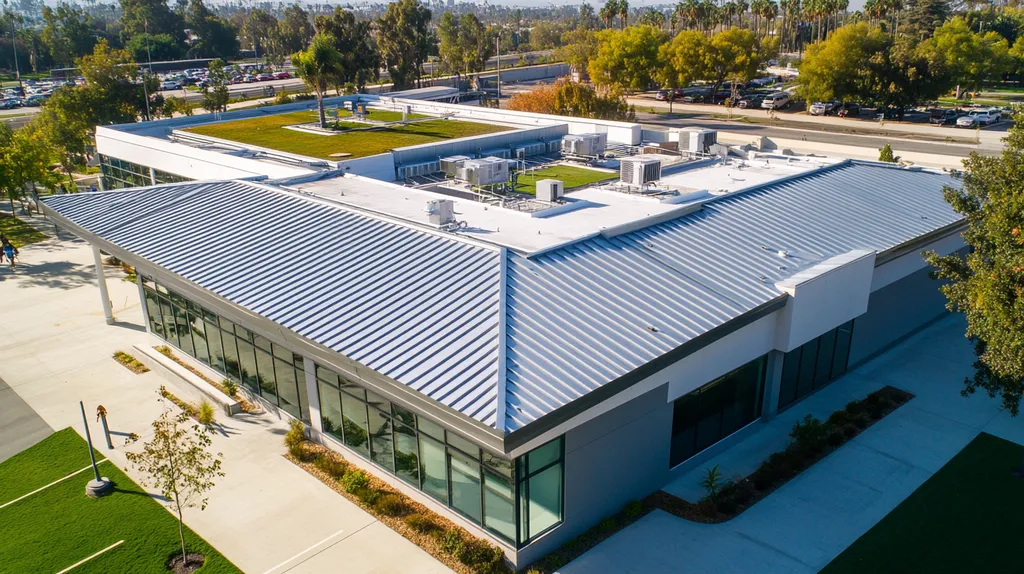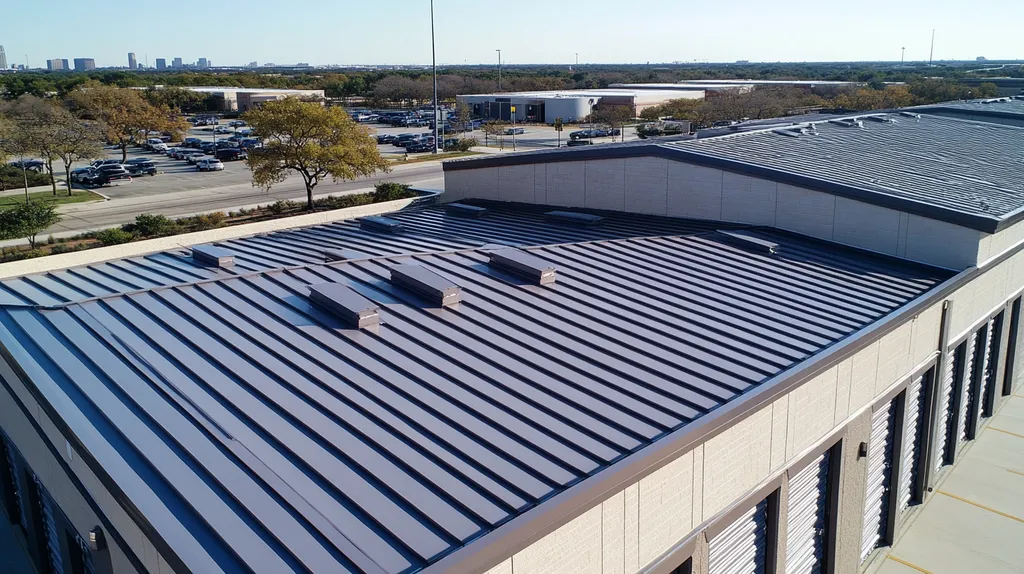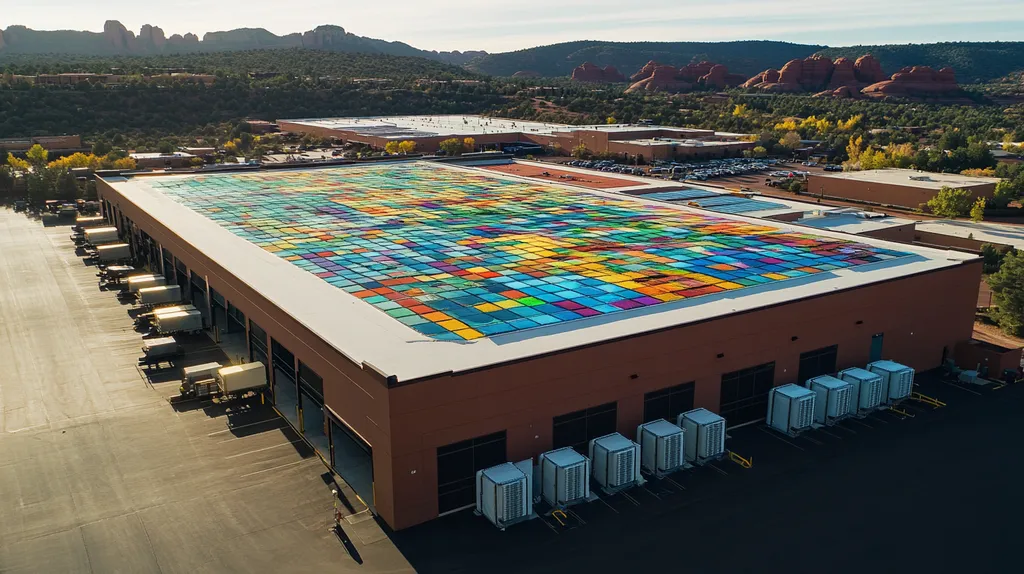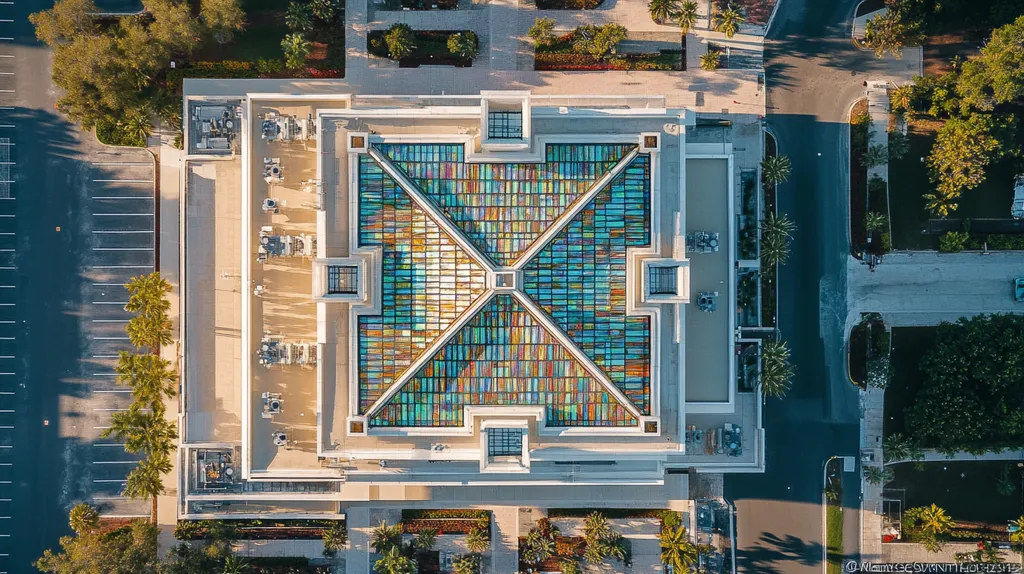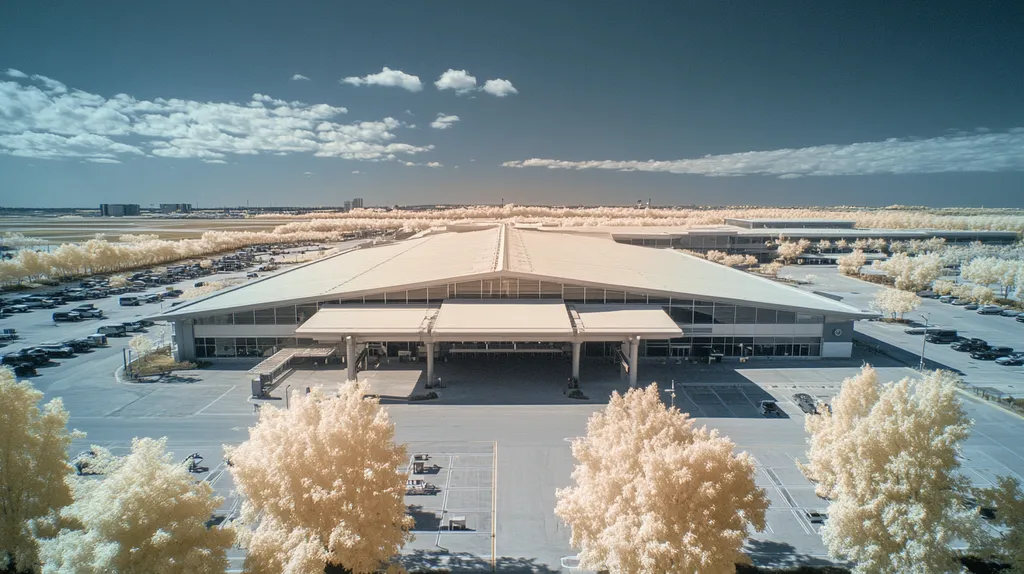Welcome to today’s Battle Royale featuring two roofing heavyweights: “Safety Harness Inspection Tools” in the east corner versus “Safety System Audits” in the west!
Tonight’s showdown pits these contenders against each other across six punishing rounds designed to test every aspect of their performance for Commercial Roof Site Safety Equipment Inspection.
At stake? Millions in potential costs, decades of building protection, and the critical performance demands of modern commercial and industrial facilities.
Our professional judging panel will evaluate each round on technical merit, real-world performance, and value delivery. After all six rounds, we’ll declare our ultimate champion.
Ladies and gentlemen, facility managers and building owners… it’s time to rumble!
ROUND 1: INITIAL COSTS & INSTALLATION
Every year, commercial roof accidents result in over $70 billion in worker compensation claims and lost productivity. The choice between safety harness inspection tools and comprehensive safety system audits can dramatically impact both immediate costs and long-term safety outcomes. Understanding the financial implications, installation requirements, and timeline considerations is crucial for making an informed decision that protects both workers and the bottom line.
Material Expenses
Safety harness inspection tools represent a minimal initial investment, typically ranging from $500 to $2,000 per complete kit. These tools offer immediate verification of safety equipment integrity without requiring extensive infrastructure changes.
Safety system audits demand significant upfront investment, often starting at $15,000 for comprehensive system implementation. This includes permanent anchor points, specialized monitoring equipment, and documentation systems.
While the cost difference is substantial, safety system audits provide broader protection and meet more stringent compliance requirements. Regular inspections are crucial after severe weather events to detect compromised safety equipment and potential hazards. (source: Procore)
ADVANTAGE: Safety Harness Inspection Tools
Installation Complexity
Safety harness inspection tools require minimal setup time and can be implemented with basic training. Most systems can be operational within a single workday, requiring only fundamental safety knowledge.
Safety system audits involve complex installation procedures, including permanent modifications to the building structure. These installations often require specialized contractors and multiple phases of implementation.
The intricate nature of safety system audits demands careful planning and execution, but provides more comprehensive protection once completed.
ADVANTAGE: Safety Harness Inspection Tools
Project Timeline
Implementation of safety harness inspection protocols can begin immediately after purchase. This rapid deployment allows organizations to enhance safety measures without disrupting ongoing operations.
Safety system audits typically require 2-4 weeks for complete installation and certification. This timeline includes initial assessment, installation of permanent fixtures, and thorough testing of all components.
The extended timeline for safety system audits, while longer, ensures comprehensive coverage and thorough documentation of safety measures.
ADVANTAGE: Safety Harness Inspection Tools
ROUND 1 WINNER: Safety Harness Inspection Tools
ROUND 2: DURABILITY & LIFESPAN
The longevity of safety equipment can mean the difference between life and death on commercial rooftops. Each year, thousands of safety incidents occur due to equipment failure or inadequate inspection protocols. Understanding how different safety approaches endure over time is crucial for facility managers tasked with protecting workers while managing long-term costs.
Equipment Resilience
Safety harness inspection tools utilize specialized sensors and testing equipment that require regular calibration and maintenance. These devices typically maintain accuracy for 2-3 years before requiring replacement or major servicing.
The digital components in modern inspection tools can be vulnerable to environmental factors like extreme temperatures and moisture. Regular recalibration ensures these tools maintain their precision in identifying potential safety risks.
Safety system audits rely primarily on documented procedures and visual inspection protocols that remain effective indefinitely when properly maintained. Their methodology evolves with updated safety standards, providing consistent reliability over time.
ADVANTAGE: Safety System Audits
Maintenance Requirements
Harness inspection tools demand frequent maintenance schedules, including monthly calibration checks and quarterly professional servicing. The sensitive nature of testing equipment requires careful handling and storage to prevent damage.
These tools also need regular software updates and battery replacements, adding to the maintenance burden. Environmental exposure during use can accelerate wear and reduce accuracy over time.
Safety system audits require minimal equipment maintenance, focusing instead on updating documentation and procedures. Their effectiveness relies more on proper implementation than equipment condition.
ADVANTAGE: Safety System Audits
Long-Term Performance
Safety harness inspection tools show decreased reliability after repeated use, particularly in harsh weather conditions. The accuracy of measurements can drift over time, requiring more frequent calibration as equipment ages.
The limited lifespan of electronic components means most inspection tools need replacement every 3-5 years. This turnover can lead to inconsistent testing protocols as new equipment is introduced.
Safety system audits maintain consistent performance levels through standardized procedures and documentation. Their systematic approach ensures reliable results regardless of equipment age or conditions.
ADVANTAGE: Safety System Audits
ROUND 2 WINNER: Safety System Audits
ROUND 3: PERFORMANCE FACTORS
In commercial roofing, performance factors can mean the difference between life-saving protection and catastrophic failure. With over 300 rooftop accidents reported annually in the construction industry, choosing the right safety inspection approach is crucial. Modern safety solutions must balance thoroughness with practicality while ensuring consistent protection for workers in increasingly complex rooftop environments.
Effectiveness of Inspections
Safety harness inspection tools provide immediate, quantifiable results for individual pieces of equipment. These tools can detect microscopic wear patterns and stress points that visual inspections might miss, offering precise data about each harness’s condition.
Regular inspections are especially critical after severe weather events, when safety equipment may have been compromised. Harness inspection tools excel at identifying specific damage points and potential failures before they become hazardous.
Safety system audits take a more comprehensive approach, examining not just individual pieces of equipment but also their interaction within the overall safety framework. This holistic view helps identify systemic weaknesses that might be missed by focusing solely on individual components. (source: Procore)
ADVANTAGE: Safety System Audits
Speed and Efficiency
Safety harness inspection tools deliver rapid results, allowing for quick decisions about equipment safety. These tools can complete individual harness inspections in minutes, enabling frequent checks without significant workflow disruption.
The speed of harness inspections means they can be performed at the start of each shift, ensuring workers always begin with verified equipment. This immediate verification provides confidence in day-to-day operations.
Safety system audits require more time but offer deeper insights into safety protocols and systemic issues. While they may take days or weeks to complete, their thoroughness provides lasting value through comprehensive safety improvements.
ADVANTAGE: Safety Harness Inspection Tools
Documentation and Compliance
Safety harness inspection tools typically include basic digital logging capabilities. While useful for tracking individual equipment status, these systems may lack the depth needed for comprehensive compliance reporting.
Modern inspection tools can generate quick reports about specific equipment conditions. However, these reports often focus on pass/fail criteria without capturing broader safety contexts.
Safety system audits create detailed documentation trails that satisfy stringent regulatory requirements. Their systematic approach generates comprehensive reports that demonstrate due diligence and support liability protection.
ADVANTAGE: Safety System Audits
ROUND 3 WINNER: Safety System Audits
ROUND 4: MAINTENANCE REQUIREMENTS
Maintenance requirements for commercial roofing safety equipment directly impact worker protection and operational efficiency. Industry data shows that over 60% of rooftop accidents involve improperly maintained safety equipment. With commercial roofing projects becoming increasingly complex, understanding the maintenance demands of different safety inspection approaches is crucial for protecting workers and maintaining regulatory compliance.
Regular Maintenance Demands
Safety harness inspection tools require specific maintenance schedules to maintain accuracy. These tools need monthly calibration checks and quarterly professional servicing to ensure reliable performance in detecting equipment defects.
Environmental factors like extreme temperatures and moisture can affect the sensitivity of inspection equipment. Regular cleaning, proper storage, and protection from elements are essential for maintaining tool accuracy.
Safety system audits focus more on procedural maintenance than equipment upkeep. Their effectiveness relies primarily on maintaining current documentation and updating protocols to match evolving safety standards.
ADVANTAGE: Safety System Audits
Equipment Calibration
Safety harness inspection tools demand precise calibration to maintain testing accuracy. These devices typically require professional recalibration every three months, with additional checks after exposure to extreme conditions.
The sensitive nature of electronic testing components means even minor calibration errors can lead to false readings. This vulnerability necessitates strict maintenance protocols and regular verification of testing accuracy.
Safety system audits rely less on calibrated equipment and more on standardized inspection procedures. Their systematic approach remains reliable without extensive equipment maintenance requirements.
ADVANTAGE: Safety System Audits
Ongoing Support Requirements
Safety harness inspection tools need consistent technical support to maintain optimal performance. This includes software updates, battery replacements, and periodic component checks to ensure accurate testing capabilities.
These tools often require specialized training for maintenance personnel and ongoing certification to maintain warranty coverage. The complexity of modern testing equipment demands regular attention from qualified technicians.
Safety system audits require minimal ongoing technical support, focusing instead on maintaining updated documentation and training materials. Their strength lies in systematic processes rather than technical maintenance.
ADVANTAGE: Safety System Audits
ROUND 4 WINNER: Safety System Audits
ROUND 5: SUSTAINABILITY CREDENTIALS
Environmental responsibility has become a critical factor in commercial roofing decisions, with safety equipment choices directly impacting a building’s overall sustainability profile. Recent industry data shows that sustainable roofing practices can reduce operational costs by up to 30% while extending roof lifespans by 50%. Understanding how safety equipment choices affect environmental performance helps facility managers make decisions that protect both workers and the planet.
Impact on Energy Efficiency
Safety harness inspection tools require minimal energy to operate but offer limited integration with building energy management systems. Their portable nature means they don’t directly impact a building’s energy profile during day-to-day operations.
Most modern inspection tools use rechargeable batteries and low-power electronics, contributing to reduced energy consumption. However, their impact on overall building efficiency remains minimal.
Safety system audits evaluate how safety equipment placement affects building thermal performance and energy usage patterns. These comprehensive assessments often identify opportunities to relocate or modify safety systems to optimize both protection and energy efficiency.
ADVANTAGE: Safety System Audits
Material Sustainability
Safety harness inspection tools typically incorporate electronic components with limited recyclability. While some manufacturers now use recycled materials in tool casings, the specialized nature of testing equipment often requires virgin materials.
The compact size of inspection tools means their material footprint is relatively small. However, their electronic components often contain rare earth elements and other materials with significant environmental impact.
Safety system audits promote the use of sustainable materials through comprehensive equipment evaluation and replacement strategies. Their systematic approach helps facilities transition to more environmentally responsible safety solutions while maintaining protection levels.
ADVANTAGE: Safety System Audits
Lifecycle Management
Safety harness inspection tools require regular replacement of components and eventual complete replacement every 3-5 years. This turnover creates ongoing waste streams that must be carefully managed to minimize environmental impact.
The electronic nature of these tools means they often become obsolete before their physical lifespan ends. This technological obsolescence can lead to premature disposal and increased environmental impact.
Safety system audits focus on maximizing equipment lifespan through proper maintenance and strategic upgrades. Their comprehensive approach helps extend the useful life of safety equipment while minimizing waste generation.
ADVANTAGE: Safety System Audits
ROUND 5 WINNER: Safety System Audits
ROUND 6: SPECIALIZED APPLICATIONS
Specialized applications in commercial roofing safety demand precise, reliable inspection protocols to prevent catastrophic failures. With over 500 rooftop accidents reported annually in specialized commercial settings, the stakes couldn’t be higher. The choice between targeted inspection tools and comprehensive audits can significantly impact both worker safety and operational efficiency in these challenging environments.
High-Risk Environment Applications
Safety harness inspection tools excel in high-risk environments where immediate equipment verification is crucial. These tools provide instant feedback on harness integrity through specialized sensors and stress testing capabilities, enabling quick decisions in hazardous conditions.
Advanced inspection tools can detect microscopic damage and wear patterns that might compromise safety in extreme conditions. Their portable nature allows for rapid deployment and testing across multiple locations within specialized work zones.
Safety system audits offer a broader evaluation of risk factors but may not provide the immediate feedback needed in high-risk scenarios. While comprehensive, their methodical approach can be too time-consuming for dynamic specialized environments.
ADVANTAGE: Safety Harness Inspection Tools
Weather-Dependent Operations
Specialized roofing operations often face extreme weather challenges that demand robust safety protocols. Routine inspections become particularly critical after severe weather events, when equipment integrity may be compromised by exposure to harsh conditions. (source: Procore)
Safety harness inspection tools provide quick verification of equipment readiness before weather-sensitive operations begin. Their ability to detect moisture damage and material fatigue makes them valuable for post-storm safety checks.
Safety system audits excel at establishing comprehensive weather-response protocols and documenting environmental impacts on safety equipment. Their systematic approach ensures consistent protection across varying weather conditions.
ADVANTAGE: Safety System Audits
Custom Installation Requirements
Specialized commercial roofing often involves unique architectural features and custom safety requirements. Safety harness inspection tools can adapt to varied equipment configurations but may struggle with non-standard safety components.
These tools typically focus on standardized testing parameters, which can limit their effectiveness in highly customized installations. While efficient for common equipment, they may not fully address specialized safety needs.
Safety system audits shine in custom installations by providing detailed evaluation of unique safety challenges and solutions. Their comprehensive approach ensures all specialized safety requirements are properly addressed and documented.
ADVANTAGE: Safety System Audits
ROUND 6 WINNER: Safety System Audits
AND THE WINNER IS…
After six grueling rounds of technical evaluation, we have our verdict, and it’s a decisive victory! With five rounds claimed, Safety System Audits emerges as our undisputed champion!
The winner dominated in crucial categories including durability, performance, maintenance, sustainability, and specialized applications. Its comprehensive approach, long-term reliability, and systematic documentation proved unstoppable in the commercial roofing safety arena.
But don’t count out Safety Harness Inspection Tools entirely! This scrappy contender showed impressive strength in Round 1, particularly for operations needing rapid deployment and minimal upfront investment. When immediate equipment verification is crucial in high-risk environments, these tools still pack a powerful punch.
Remember, folks – every commercial property brings its own unique challenges to the ring. Local conditions, building specifications, and operational requirements can all impact which safety solution best suits your facility. While tonight’s match provides valuable insights, property owners and managers should always consult qualified roofing professionals who can evaluate their specific situation.
In the high-stakes world of commercial roof safety, there’s no room for technical knockouts. Choose your champion wisely, because when it comes to protecting workers and property, everyone needs a reliable contender in their corner!
FREQUENTLY ASKED QUESTIONS
Q. What are initial costs for commercial roof safety inspections?
A. Initial costs for safety harness inspection tools range from $500 to $2,000. In contrast, comprehensive safety system audits often start at around $15,000, including setup and specialized equipment. Understanding these financial implications is essential for making informed decisions that safeguard both workers and budgets.
Q. How durable are safety devices for industrial roof sites?
A. Safety harness inspection tools typically last 2-3 years before needing calibration or servicing. They can be affected by environmental conditions, while safety system audits can remain effective indefinitely with proper maintenance. Understanding these durability factors helps ensure ongoing worker protection.
Q. What factors affect the performance of commercial roof safety inspections?
A. Performance factors include the effectiveness of inspections, speed, and compliance documentation. Safety harness inspection tools yield immediate results for individual harnesses, while safety system audits assess systemic weaknesses. Selecting the right method can significantly enhance protection and operational efficiency on commercial roofs.
Q. How often do maintenance requirements vary for commercial roof inspections?
A. Safety harness inspection tools necessitate monthly calibration and quarterly servicing. In contrast, safety system audits focus primarily on procedural maintenance, requiring less frequent equipment upkeep. Understanding these variations assists facility managers in maintaining regulatory compliance and worker safety.
Q. How do safety inspections impact sustainability on industrial roofs?
A. Safety system audits evaluate the placement of equipment, allowing for improved energy efficiency. They can identify opportunities to optimize systems, while safety harness inspection tools generally have limited impact. Understanding sustainability credentials is vital for saving costs and positively impacting the environment.
Q. What are the specialized applications of safety inspections for commercial roofs?
A. Specialized applications in commercial roofing require precise inspection protocols. Safety harness inspection tools are effective in high-risk environments for quick feedback, while safety system audits consider broader risk assessments. Identifying which methods suit specialized settings is critical for enhancing worker safety.
Q. How do safety inspection methods differ in overall effectiveness?
A. The effectiveness of safety inspection methods varies significantly. Safety harness inspection tools provide immediate diagnostics for individual pieces of equipment, while safety system audits consider the entire safety framework. Understanding these differences can enhance strategic safety planning for commercial roofs.

